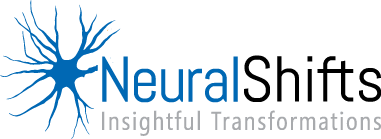As institutional irrationality prevails, creating a truly diverse and equitable workforce will require Diversity & Inclusion strategies to champion decision-making systems that reward power-sharing. Remember, every single employee is making large and small decisions all day long, so getting people to think about the decisions they’re making, and why, is a huge step forward.
To more deeply understand how decision-making and power-sharing play out in the office, let’s have a closer look at principles of Behavioral Economics that we can apply to D&I:
Action Goals Gap: You’ve seen this before—it’s lip service given to a diverse workforce…and yet people’s intentions don’t match their actions, or their effort.
Default Bias: This is the path of least resistance to avoid making complex decisions. This looks like recruiting from top or local schools instead of engaging with the community or tapping into larger candidate pools with more diversity
Ego Depletion: Making good decisions is limited by brain capacity; aka, too many choices equals overwhelmed. Some organizations are driving too many initiatives and asking employees to engage in all of them, which spells D&I fatigue.
Herding: High uncertainty situation? Just do what everyone else is doing! Not. Like when a bro corporate culture is driven by the CEO and embraced by those seeking to belong.
Overconfidence: Zero reports of harassment means your harassment policies are working—right? Or maybe you’re lacking independent safe reporting procedures.
So, Where Can You Start?
Implement “nudging,” one of the most widely used tools from Behavioral Economics—a technique used to encourage or discourage someone from taking action (like placing vegetables at cash registers instead of candy to encourage healthy eating). At a large corporation, we placed posters describing meeting norms in conference rooms to “nudge” attendees to adopt the behaviors that led towards more inclusive meetings.
You can craft simple nudges by working with your company’s communications expert and test its effectiveness to drive behavior change. For example, you can remind employees that all hiring/promotion decisions taken must be equitable and fair. Or you could publicly promote the achievements of diverse groups, especially women and minorities, to counteract the prevailing bias that they are less qualified to perform the job or be promoted. By partnering with your marketing department, you can launch email and video campaigns, too, with visuals.
Here are a few strategies you can start implementing immediately:
- Assess your organizational processes and decisions
Empower a group of employees to begin mapping decisions that directly impact Diversity & Inclusion. Then examine HR functions such as recruiting, hiring, and policy-making to identify biases in the process—and find opportunities to positively influence decisions by removing barriers and nudging.
- Examine your organizational beliefs around power, meritocracy and diversity & inclusion:
Determine the type of cognitive biases the culture may be triggering during decisions. Look at formal and informal reward practices to find discrepancies. Begin to redefine inclusion as the act of sharing power, where employees can share resources, information, and access to high power individuals or relationships.
- Use herding—to drive mass adoption: At Microsoft, we asked employees around the globe to self-record their personal stories of inclusion and share a specific story of their action. The videos were shown to over 30,000 people at an annual conference. (Even direct reports to the CEO recorded their own stories, and hundreds more employees shared their own commitments.)
- Cultivate transparency through feedback loops:
You know those fancy speedometers that indicates your current speed? When people have information about the success of their decisions, they are less likely to decide out of bias. Allowing employees to learn from their mistakes makes them less afraid to take risks—and inspired risk-taking is how you grow.
- Create promotion systems with limited managerial discretion: Recruit an employee to monitor the integrity of the promotion process (make sure the project leader doesn’t interact or work directly with the employee being promoted). Iris Bohnet, a Behavioral Scientist at Harvard, recommends evaluating several candidates at once to expand frame and overcome confirmation bias—our tendency to seek information that confirms rather than contradicts our thinking.
Want to learn more about the underpinnings of behavioral science that can help you make better diversity and inclusion decisions? Reach out.
References
- Who is still biased. Boston Globe Opinion.
⦁ Iris Bohnet, What works: gender equality by design
⦁ Emilio Castilla, Achieving Meritocracy in the Workplace
⦁ Blanken, Irene & van de Ven, Niels & Zeelenberg, Marcel. (2015). A Meta-Analytic Review of Moral Licensing. Personality & social psychology bulletin. 41. 10.1177/0146167215572134.
⦁ Nudge, Richard Thaler and Cass Sunstein
⦁ Work Rules, Laszlo Bok




0 Comments